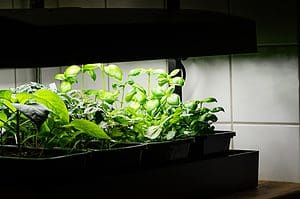Enter your email in the box below to get the most mind-blowing animal stories and videos delivered directly to your inbox every day.
South Sudan is a landlocked country located in East Africa. It is bordered to the north by Sudan, to the south by Uganda, to the southwest by the Democratic Republic of Congo, to the east by Ethiopia, to the southeast by Kenya, and the west by the Central African Republic.
The landmass is made up of plains, plateaus, and mountains. The country’s central region is mostly flat, with vast swampland formed by the White Nile Baḥr al-Jabal section. However, other regions of the country are mostly highland areas. The Imatong Mountains, in the south near the Ugandan border, is the country’s most prominent mountain chain. It features Mount Kinyeti, South Sudan’s highest peak at 10,456 feet.
There are many interesting things to learn about South Sudan, including its fascinating location, long and bloody civil wars, and the wild struggle for independence that spanned over 50 years. How did South Sudan earn the right to its regional symbol after the prolonged Civil War? Most importantly, what role does the South Sudan flag play in defining the country’s new identity and setting it apart from the rest of mainstream Sudan? Keep reading to find out.
©iStock.com/Nabil Kamara
The first Sudanese civil war between Northern and Southern Sudan began in 1955, four months before Sudan was declared independent from Great Britain. The twelve-year conflict involved the central government of Sudan and the Southern Sudan Liberation Movement (SSLM).
Ten years after the civil war began, Interim Prime Minister Muhammad Ahmad Mahgoub offered amnesty to the Southern Sudanese rebels on the condition that they would lay down their arms. However, the offer was rejected, and the fighting continued.
The first Sudanese civil war eventually ceased in 1972 with the Addis Ababa Agreement. In 1983, the second civil war began after the Sudanese President, Gaafar Nimeiry, declared all of Sudan an Islamic state under the Shari’a law, including the non-Islamic majority southern region. The war continued until 2005, when the Comprehensive Peace Agreement was signed. Following the 22-year Sudanese civil war that came to be known as the longest civil war in Africa, tensions remained between Northern Sudan and Southern Sudan until South Sudan was declared a country on July 9, 2011, after 98.83% of the population voted for independence from Sudan. Regardless, civil battles persisted in South Sudan until the latest peace deal in 2020.
South Sudan is the 18th biggest country in Africa, with a population of 12.6 million and a density of 56 people per square mile. The region has two seasons: a rainy season with high humidity and a dry season.
South Sudan is mostly covered in tropical forests, swamps, and grassland. The White Nile passes through the country’s capital, Juba, with half its water feeding into the swamp and being absorbed by vegetation and animals. The Sudd, the Bahr el Ghazal, and the Sobat River swamps provide nutrition to wild animals and livestock.
South Sudan is a democratic republic with rich natural resources, albeit economically impoverished due to damages from the civil war. Most citizens are either bilingual or trilingual, but the country’s official language is English. It is also common for residents to communicate in standard Arabic or Juba Arabic, which was the dominant language of Sudan before the split. Most South Sudanese also speak the dialect of their tribe.
South Sudanese people share a cultural connection based on their common practice of Christianity. The bond is further strengthened by the experience of struggle, war, and liberation from North Sudan.
©iStock.com/Primada
The South Sudan flag was adopted in 2005, six years before South Sudan became independent from Sudan. The flag’s adoption followed the signing of the Comprehensive Peace Treaty that ended the Second Sudanese Civil War, and the agreement included a referendum on independence in the south.
The flag of South Sudan bears semblance to the Sudanese flag. It is designed in the colors of the Kenyan National flag, consisting of black, red, and green horizontal stripes. It also holds thin white stripes and a blue triangle on the left side of the flag, with a yellow star in the middle of the triangle. The delicate white stripes on the flag separate the black, red, and green horizontal stripes.
The black stripe represents the people of South Sudan. Red means the blood shed for the country’s independence during the civil war. Green represents progress, the richness of agricultural resources, and the natural wealth of South Sudan, and white represents the peace attained after several years of the liberation struggle. The blue triangle symbolizes the waters of the Nile River that flows through the landlocked country. At the same time, the yellow five-point star represents the South Sudanese people’s unity, hope, and determination.
Before the independence of South Sudan in 2011, South Sudan functioned as a part of Sudan, and it adopted every national symbol used by Sudan leading up to its independence. The first recognized flag of new-age Sudan was the blue, yellow, and green tricolors adopted on January 1, 1956, upon Sudan’s independence from Egypt and the United Kingdom.
The current Sudanese flag, based on Pan-Arab colors, was designed in 1969 by artist Abdel Rahman Ahmed Al-Jali and adopted in Sudan in May 1970. The flag consists of three horizontal stripes of red, white, and black and a green triangle on the left side of the flag.
Altogether, South Sudan’s flag, adopted in 2011, marked the end of a long-awaited fight for freedom and the beginning of a brand new era. Although the colors of South Sudan’s flag are much similar to that of the Sudanese flag, the meaning is uniquely personal. South Sudan’s flag bears witness to a country young and ready to forge its own path, true to the struggles for which its martyrs laid down their lives.
Thank you for reading! Have some feedback for us? Contact the AZ Animals editorial team.
The Blue Picardy is also known as the Epagneul Bleu de Picardie in French

As an Amazon Associate I earn from qualifying purchases.
Learn more about us & read our affiliate disclosure.
Copyright © 2008 – 2023 A-Z Animals